How To Repair A Leaking Waste Water Pipe Seam
Stop Leaks in Plumbing Joints
Foolproof methods for connecting valves, faucets and sinks, and drain parts.
Introduction
The best time to fix a plumbing leak is before it happens, past properly connecting h2o supply and waste matter line fittings. Larn the tricks that pros utilise to make leakproof connections.
Tools Required
Materials Required
- Flexible supply tubes
- Teflon pipe joint compound
- Teflon tape
Project step-by-step (eleven)
Pace one
Use two types of Teflon pipage joint chemical compound on threaded joints
Wrap threads with plumbers record
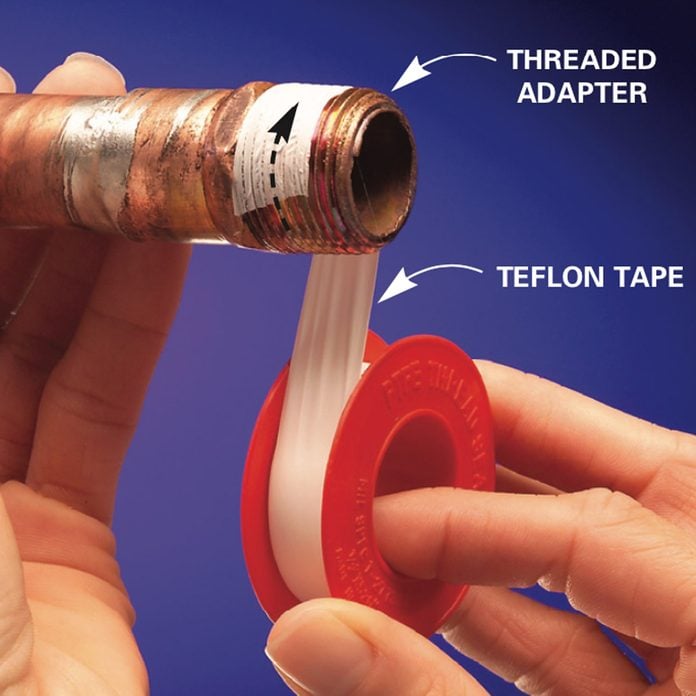
Wrap the plumbers tape effectually the pipage clockwise.
How to Fix a Dripping Shower
Step three
Tighten the connectedness
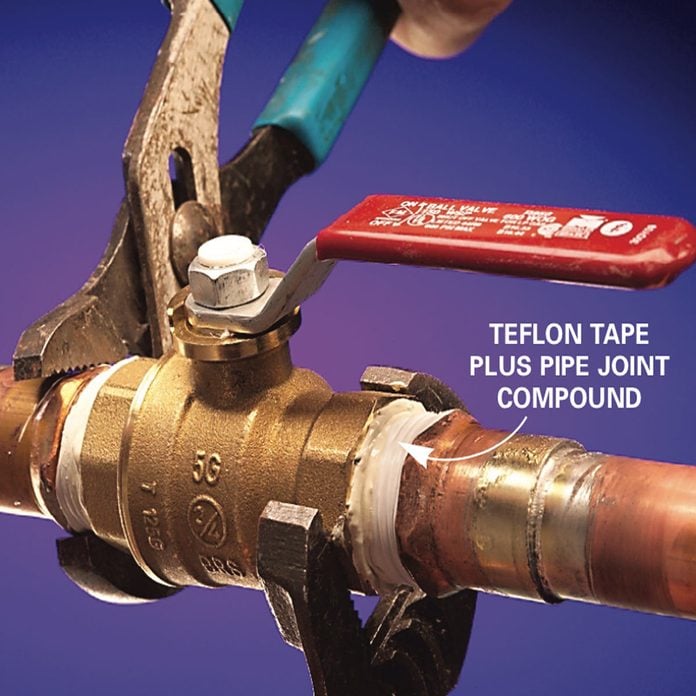
Using two wrenches, tighten the connection over the joint compound and plumbers record.
Why utilise plumbers tape and pipage joint compound
Connections that rely on threaded pipes and fittings are decumbent to leaks if they're not sealed with either Teflon tape or Teflon pipe articulation chemical compound. Careful plumbers use both pipage joint chemical compound and teflon on every joint for actress security. They don't want to come back.
Start by wrapping the male threads with Teflon tape (Photo 1). With the end of the threaded pipe facing you lot as shown, wrap the plumbers record clockwise. Usually iii layers is enough. Once in a while, you'll encounter a loose plumbing equipment that requires four or five wraps. Stretch and tear the tape to complete the wrap.
Spread a thin layer of Teflon piping joint chemical compound over the tape (Photo 2). If you're working with plastic piping, choose Teflon pipage joint compound that's uniform with information technology. And so start the threads by hand earlier tightening the connection with wrenches (Photo 3). Wipe away the excess pipe joint compound.
Well Pump Troubleshooting and DIY Repair
Step 4
Lubricate the ferrule on compression joints
Wipe pipe joint compound

Lubricate the ferrule and contumely band with pipe joint chemical compound.
Handy Plumbing Tips and Tricks
Step 6
Tighten the fitting
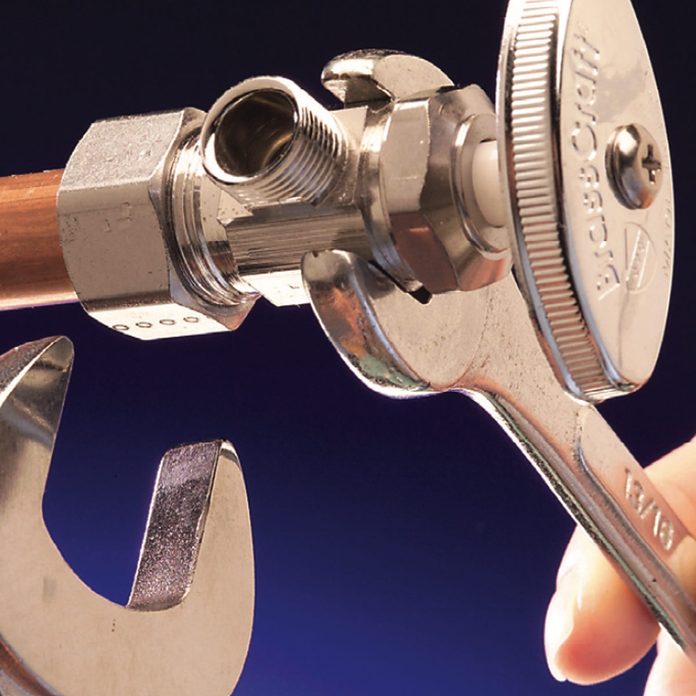
Tighten the compression fitting. The pipage joint chemical compound provides a greater margin of safe. Pinch joints are about common on shutoff valves, although you find them on other fittings as well. They take a contumely or plastic ring (ferrule) that's compressed into a recess when you tighten the nut, forming a seal. Lubricating the pipe and the ferrule with a bit of Teflon pipe joint compound (Photo 1) helps the ferrule slide along the pipe and squeeze tightly into the recessed fitting with less wrench pressure (Photo 2). Tighten compression fittings firmly with two wrenches to crimp the ferrule onto the pipe (Photo three). Besides brand certain the pipe or tube goes straight into the plumbing fixtures. Misalignment will crusade a leak. If the fitting leaks after you turn on the water, try tightening the nut an additional one-quarter turn. This normally stops the leak.
The 30 Secrets a Plumber Won't Tell Y'all
Step 8
Assemble and align
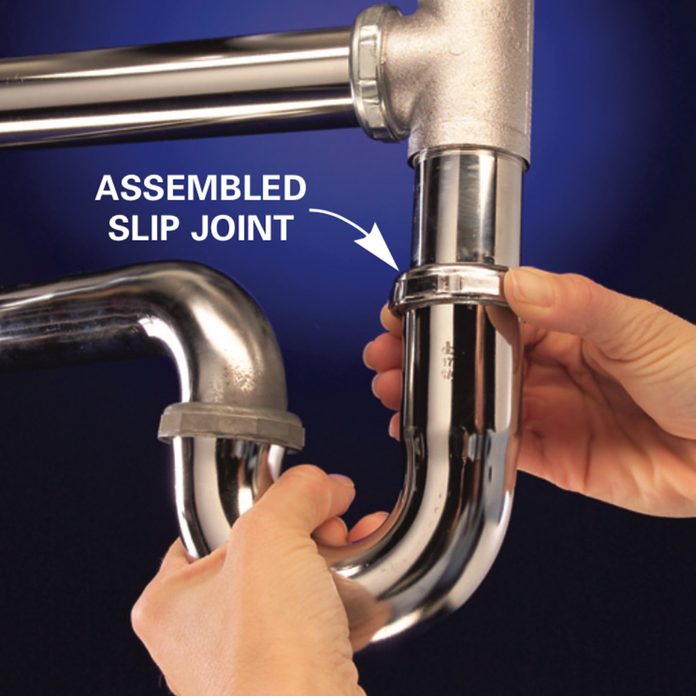
Manus-tighten all the joints, and then marshal and lock the pipes in position with a slip joint pliers
Joints on chrome trap assemblies rely on rubber sideslip joint washers for the seal, which oft leak. If y'all're reassembling a chrome trap, buy new skid articulation washers and nuts. Still, new washers sometimes stick to the piping, causing them to twist or distort every bit you lot push them tight with the sideslip joint nut. To avert this, lubricate the drain tubing and slip articulation with a little pipe articulation compound (Photo ane). The compound helps the washer slide smoothly and creates a tighter seal.
Start the slip joint nut past manus, and twist information technology on until the threads are engaged correctly. Mitt-tighten all joints first (Photograph two). So adjust the trap parts until they're aligned and pitched slightly for drainage. This is key; a misaligned joint will leak, even with new washers. Finally, use a large skid joint pliers to tighten the nuts an boosted half turn.
Plastic trap parts use hard plastic slip joint washers for a seal. Make certain the flat office is against the nut with the tapered side facing the fitting.
12 Things Your Plumber Doesn't Want You To Know
Step 9
Choose flexible supply tubes
Solid copper supply lines

Avoid solid copper or chrome supply lines. They're difficult to get right unless you lot've had lots of experience with them.
12 Things Your Plumber Wants You To Know
Step 11
Close-upwards of gasket
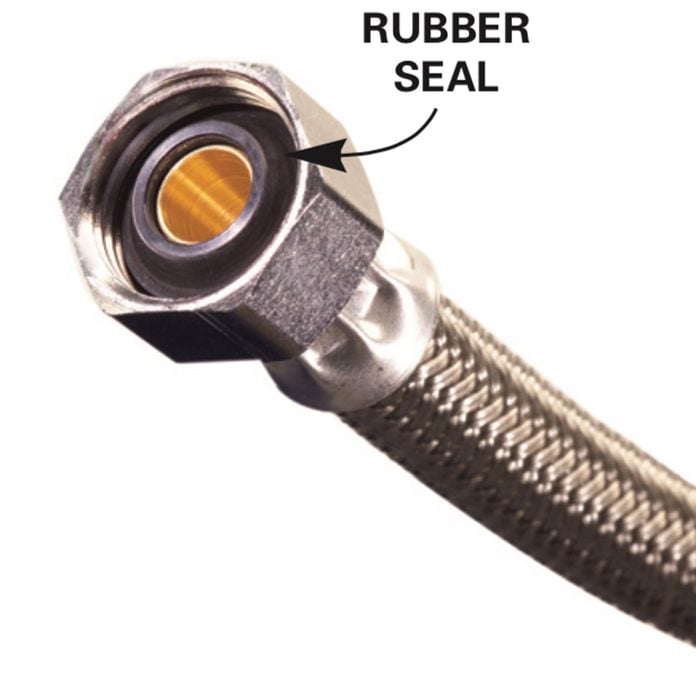
Flexible supply lines use rubber gaskets to seal the connections, and usually simply demand hand-tightening plus half a turn with a wrench
The skinny copper or chrome supply tubes used to connect faucets and toilets (Photo 1) are catchy to cut, bend and marshal. But you lot don't take to put up with them. When y'all're replacing a faucet or toilet, use flexible supply hoses with a braided covering instead (Photo 2). They have safe gaskets at each end and don't crave much forcefulness to seal. They're bachelor in many lengths and are flexible enough to fit virtually any configuration. The but trick is ownership a connector with the correct size nuts on the ends. Take your erstwhile tubing and the basics on each cease along with you to the shop to be sure of an exact friction match.
Start the nuts carefully and hand-tighten. Then tighten an additional one-half turn (Photo 2). Avoid overtightening. It's easy to tighten the nuts a piffling more if the articulation leaks.
Observe and Repair Hidden Plumbing Leaks
Originally Published: March 21, 2022
Source: https://www.familyhandyman.com/project/stop-leaks-in-plumbing-joints/
Posted by: reyesyesper.blogspot.com


0 Response to "How To Repair A Leaking Waste Water Pipe Seam"
Post a Comment